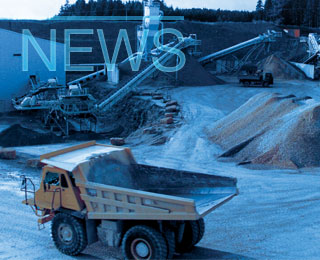The Indian cement industry is failing to realise the potential for alternative fuels and raw material utilisation (AFR), but resolves to raise the thermal substitution rate (TSR) to 25 per cent by 2030, from the current level of less than one per cent.
This was the conclusion of a two-day conference on co-processing in cement plants, convened by the Washington-based Institute for Industrial Productivity (IIP) and the Cement Manufacturers’ Association (CMA) of India.
In his introductory address to delegates, Mr Ratan Shah, Group Executive President, UltraTech Ltd, noted that while India, the second largest producer of cement in the world after China, has excelled in improving the energy efficiency of its plants in recent decades, the current thermal substitution rate (TSR) of fossils fuels by alternative fuels such as biomass and municipal waste, stands at only 0.6 per cent, far below the double-digit rates achieved in developed countries.
He described the target for fossil fuel substitution of five per cent by the end of the 12th National Plan as “ambitious” and only achievable if considerable efforts are made by all stakeholders. “The challenge here,” said Mr Shah, “is to set up efficient waste collection systems and pre-processing facilities, while the industry needs to continuously invest in co-processing and alternative fuel feeding systems. The policy makers also need to support the industry to achieve this goal.” Providing incentives for the processing of municipal wastes will be key to this success.
Mr M Muthiah, President of the CMA, then highlighted during his address to delegates, the concerns relating to the cement industry’s dependence on coal as its primary fuel. Energy constitutes approximately 50 per cent of the cost of manufacturing cement, and the industry currently imports large amounts of coal to meet its energy needs, he explained.
Increasing alternative fuel utilisation would reduce fossil fuel consumption, thereby reducing associated coal imports and reducing competition for domestic coal resources with the power sector, he added. Increase AFR would also mitigate greenhouse gas emissions and provide an environmentally sound solution for India’s growing waste problem.
Action plan
The conference also saw the launch of a new report, co-authored by the CMA and IIP entitled “Action plan for enhancing the use of alternate fuels and raw materials in the Indian cement industry”, which sets out a series of key recommendations for the industry.
The report identifies the five ‘most promising’ alternative fuels available to cement producers in India, namely: biomass, residue derived fuel (RDF) from municipal solid waste (MSW), used tyres, hazardous waste and industrial waste. Fly ash and slag were shortlisted as the most promising raw materials.
In his summing up of the conference, Mr Hardik Shah, Member Secretary of the Gujurat Pollution Control Board urged all stakeholders to renew their efforts to enable higher AFR usage in the country: “Let us all work together to raise the TSR from less than one per cent today to 25 per cent by 2030, through the utilisation of wastes as proposed in our planning document in a gainful and environmentally-friendly manner.”
